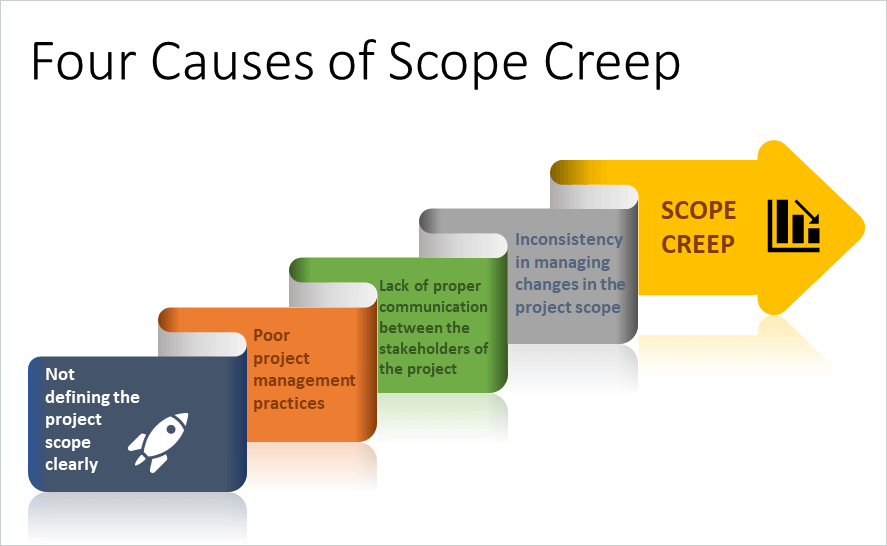
If we are wearing the project manager’s hat, delineating and organizing the project is our responsibility. The first step to success is controlling a project is planning and defining. Determining scope is possibly the most important aspect of the initial process of the definition of the scope of a project. The goal of delineating the scope is to be able to clearly define and establish the limits of the project. Scope declarations can be used to clarify what’s within the limits of the project, and the things that are outside of the boundaries. I have observed many project managers who have acquired the PMP Certification that isn’t certain about the things they are delivering or which boundaries their project are, and they have the lowest chance of success. The management of scope is among the most important aspects of managing the project. If you’ve not made the right choice of delineating scope, managing it will be nearly impossible.
If you’re a project manager and have been around for a while might have had a trip to the guillotine for your project. It could be caused by a huge delay in scheduling, budget overrun, or scope expansion (or often all three – that’s chaos!). As the project manager, you were the first one to be at the lance!
What is the significance of Project Scope Change Management Important?
There are three reasons for scope management to be the top priority of project managers. professional who is successful in managing projects:
Cost
A project manager will be accountable for scheduling, cost and quality. Any scope change may alter work that has been previously completed. This could mean rework costs for work that is already in progress or, even more important, completed.
Schedule
Each change in scope can result in the diverting of precious resources from the project for tasks that weren’t identified in the initial scope of work and can put tension on the schedule of the project. The project manager should also be aware of the impact on the project’s crucial path.
Quality
To ensure the quality of product, every change must be examined carefully and integrated into the design. If not properly analyzed the scope of changes can result in rapid fixes that could alter the quality of products.
Tips and Strategies to Ensure Proper Change Management
I’ll provide you with useful suggestions and strategies to keep scope changes in check:
Proactive Change Management
Changes to the scope of every project are inevitable. The project manager must play the initiative to identify the changes and discussing them with those involved. If they are active the project manager will be able to include the crucial few modifications that make up 80% of stakeholder’s concerns and concerns.
Request Sponsors’ Approval
If changes are expected The project manager must always seek the approval of the sponsor and buy-in to the change request prior to authorizing any work related to it. If it’s not possible to get the sponsor to review each change, request him/her to look over a list of request for changes. Alternately, the change could be understood as routine and requires more investigation.
A Comprehensive Impact Analysis
In the course of the project, everyone will be under pressure to complete the project in a short time, and this may cause a superficial analysis of the impact of a change; however, the consequences aren’t enjoyable. A impact analysis must take into account all configuration items that are directly affected as well as cost implications.
Always inform of changes
Project managers, who begin their career on going through the Project Manager Interview Questions, should ensure that there is effective communication of changes between teams and outside. Within a large team, the changes could be missed when they aren’t promptly communicated. Everyone wants to know what they’re working on and to keep informed of any of the project’s decision-making. Communication between teams is crucial for understanding and conquering resistance to changes.
Avoid Scope Creep
In project management, scope creep refers to uncontrolled growth or changes in the project’s scope. This can happen whenever the extent of the work isn’t clearly defined, documented, or monitored. It is typically regarded as an undesirable occurrence and should be avoided. Scope creep can occur when modifications are permitted without adequate impact analysis as well as without considering costs and schedule consequences. It is common for minor adjustments that are not reflected in the budget and schedule of the project are not in sync with the amount of effort required for the adjustments. In this situation, there is no way to prevent a runaway project condition. Scope creep can be a sign of a process issue It is the best solution to establish a procedure to keep track of every modification and monitor its execution

James is a great tech-geek and loves to write about different upcoming tech at TechyZip. From Android to Windows, James loves to share his experienced knowledge about everything here.

Leave a Reply